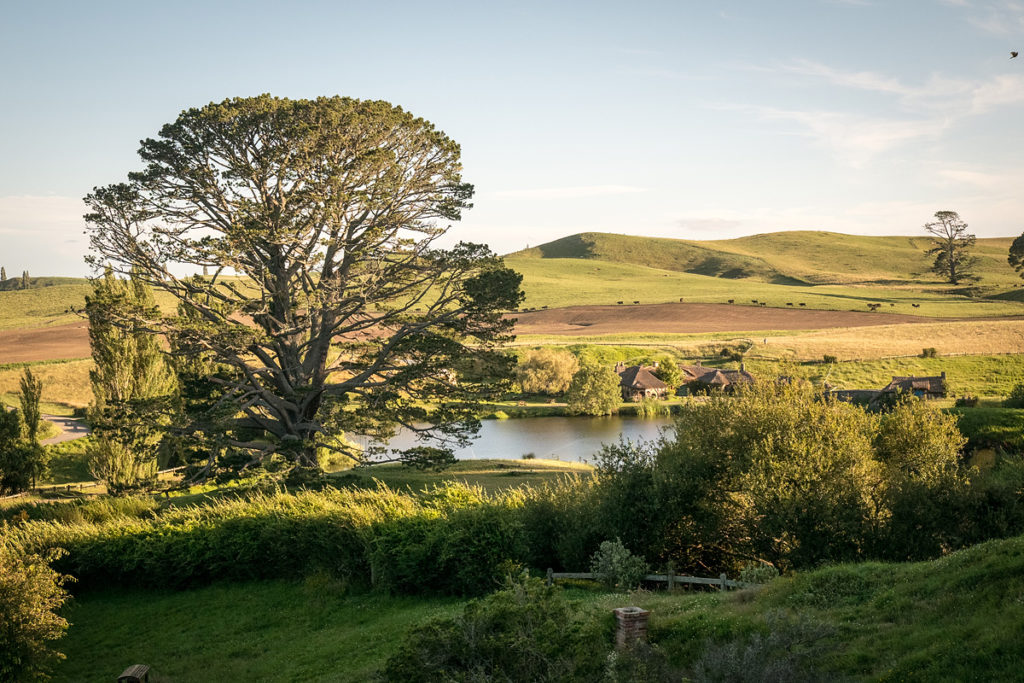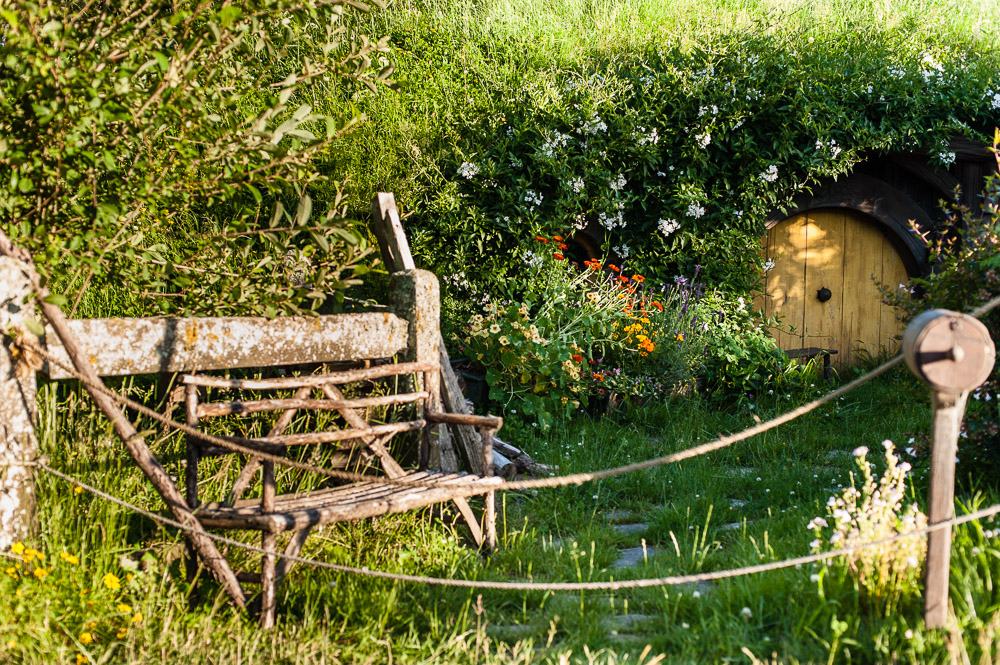March 8, 2013
New Zealand-2013. Days 0-2. First NZ (notably zazzy) impressions.
Hi all!
Here’s the main course (actually the first of five main courses, followed by the desert :), to logically follow the starter (for those who missed it – here!).
Day 0. Getting there.
New Zealand – it’s like, sooooo far from just about anywhere on this darn planet. Well, besides Australia. So if ever you plan to get on down (under!) to NZ, be prepared: flying from Europe takes about a day and a half. From Moscow to Auckland you’re in the air for more than 20 hours, and from Western Europe you need to add another three on top of that. From the US (San Fran, LA) and also from Chile (Santiago) you’re in the air for a good 13 hours – flying westwards. From Europe (and European Russia) it’s possible to fly via Tokyo, Seoul, Shanghai, Hong Kong, Guangzhou, Bangkok, Kuala Lumpur, Singapore, and no doubt other cities – and that’s with just one connection. If you don’t mind connecting twice, it’s poss to go via Oz too. In short, getting to NZ (and Australia) is not the simplest of global leaps, but there are at least plenty of different options to choose from. I’m fortunate enough to have been in this neck of the world’s woods a few times before. Examples:
- In 2012 – Australia-Europe: see here and here;
- In 2012 – USA-Australia; and
- USA-Australia (pics only (Russian text)).
Sooo, even if you get past the initial fear of the long flight to NZ, book your tix, and off you
pop – there’s still the non-trivial matter of how to correctly spend all that time on the plane. Best option here: simply sleep. It’s really quite simple. Don’t try anything else. Take it from me!
It makes the next difficulty a tad easier…: It’s not hard to guess – the next difficulty is… jetlag.
Extreme jetlag.
With a time difference with Moscow at nine hours, 12 hours for Western Europe, plus an even longer length of time for the journey itself – it doesn’t come worse than this. So expect that after landing practically everyone’s head will be pretty messed up – especially those who didn’t – or couldn’t – take my advice (“sleep!“) in the previous paragraph.
Alas, flying Europe to Oz and NZ takes up two nights. That’s just how geography affects things here. Plus, flights with most airlines are organized in such a way that you fly through the first night before the first connection, and then fly through the second night heading over to NZ.
Upon arrival at the destination (that’ll be NZ, then) – what to do? Well, though this may seem at first paradoxical, the best thing to do is not sleep, even though you’ll no doubt really want to! Otherwise one’s lazy organism will take forever readjusting itself to local time. Best of all – get straight into a car and drive somewhere…
If you’re flying into Auckland, then you really need to get to the beach at Piha and have a swim (and only a swim, no matter the mischievously suggestive name. Ha!!). Just don’t expect the ocean to be warm – it’s actually quite nippy; but that’s just what’s needed – invigoration! After your swim – get back to Auckland and go walkabout…

 Speedo alert :)
Speedo alert :)
Once back in Auckland, I’d recommend getting up its famed Sky Tower, the tallest building in the Southern Hemisphere. The second observation deck is best (at 220 meters) – the view from there is better as the glass isn’t so tinted. Optional are two more attractions: observing the more daring tourists doing the SkyWalk (a walk around the edge of the disk near the top of the tower (roped up, of course)) and/or the SkyJump (bungee jumps from 192 meters up). Or you can even have a go yourself; personally I prefer just to observe such things from a safe distance.

Next I’d advise a stroll around the center of the city, taking in Albert Park and perhaps a scenic suburb like Devonport. And if you’ve any energy left at all, you can get in a quick-march along the Coromandel Peninsula. Also highly recommend are the numerous Japanese and Chinese restaurants here. Since we feared that healthful and tasty food might not be all that forthcoming on our trip into the wilds (NZ needs to have at least some cons to go with the pros), we decided to cram the scran as best we could in Auckland while we could. (Any old excuse for gluttony will do :).
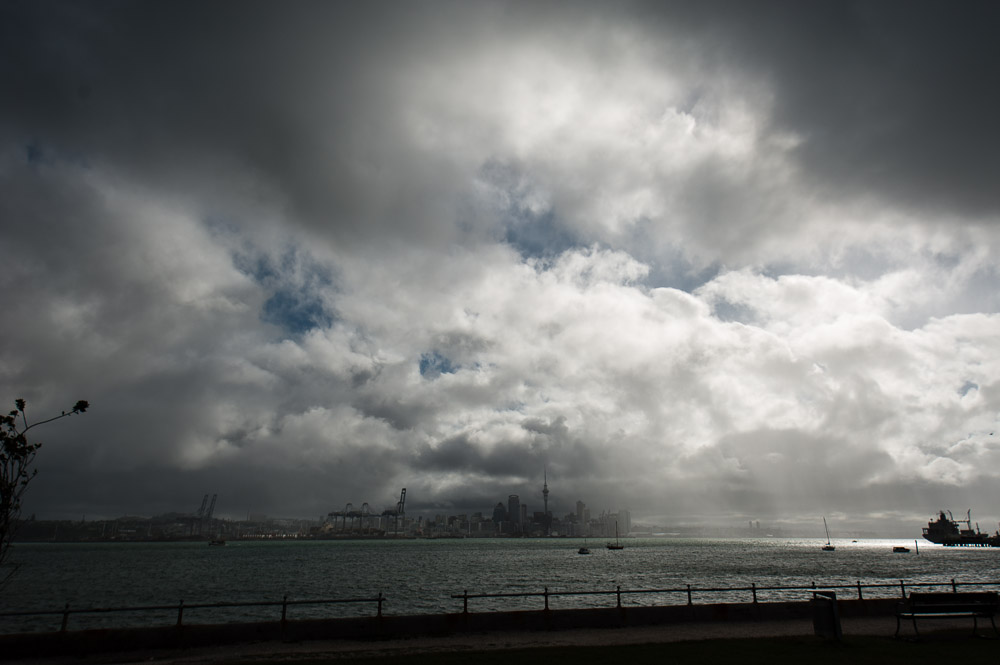 An example of NZ’s famously changeable weather
An example of NZ’s famously changeable weather
Day 1. Planes, trains, and automobiles.
You can navigate around NZ by various methods – its transportation infrastructure is fully developed, as you’d expect. You can go on foot on hilly hikes (more of this a bit further on), sail on boats on fiords (alas, poor weather prevented us from doing so), ride bicycles or motorbikes, hitchhike, drive rented cars, fly helicopters, jetpack… There’s also a nice touristy-train with open carriages.
However, if “conquering NZ in the shortest time possible” is the goal (as it was with us), then hire cars are the way to go. Just be prepared… you need to cover a heck of a lot of miles in a motor to “do” NZ. Gems of natural NZ beauty seem to have a cunning knack for being hundreds of miles apart from one another. On the positive side – the lengthy roads you travel along are unequivocally unforgettable.
The roads here are mostly two-lane, as in the above pic, rarely with a lane for overtaking, and you only see divided highways (two lanes going both way) in the big cities (Auckland, Christchurch, and Wellington); however, once you get out of the urban areas the roads are practically empty. Besides, the views they provide are magnificently marvelous… …So marvelous that you get the impression that the surrounding scenery here is all carefully mowed, trimmed, painted, and Photoshopped (more so on the North Island). Everything is flat, beautiful, spick and span, and incredibly bright and colorful. It makes you always want to stop and stare and snap. Which is just what we did.
 Highway to hell heaven
Highway to hell heaven
 More blue sky
More blue sky
Practically all the surrounding scenery (if it isn’t wood, lake, sea, or hill) is carefully crisscrossed with neat fences, keeping in – or out – mostly cows and lots and lots and lots of sheep. You also see roe dear and other creatures; even peacocks now and again. The creatures also somehow get to be bright and colorful and neat and tidy here – blending in nicely with their surroundings. It’s as if before leaving the house for work in the fields they all take showers and spruce themselves up in their best clobber :)
But let me say it once again, just in case you missed it the first time: if you want to see everything (or nearly everything) – you need to do lots and lots and lots of traveling. In 17 days we covered around 3700 miles (6000 kilometers), and that includes hiking days; that works out at around 200 to 300 miles (~300 to 500 km) per day. So be forewarned. It’s not for the road-shy. Again, on the positive side, the roads here are something else: a real – almost blissful – pleasure to drive on. Here’s a quick guide to the cream of the cream of the main roads here:
North Island:
- State Highway 26 – around the Coromandel Peninsula. Along the way on this resplendent road you can warm yourself in hot springs – on the east coast of the peninsula (Hot Water Beach). You’d do well taking a spade with you to dig out a pool in the sand.
South Island:
- State Highway 6 – along the west coast (we didn’t get to go along the full length of it – after the rain there were some landslides and the road was closed (NZ-extremism!));
- State Highway 73 – through national parks from the west coast towards Christchurch, featuring great scenic views all around you;
- State Highway 1 – on the east coast, past Kaikoura. Here the roads are marked as being part of the Alpine Pacific Triangle. I can confirm that this route is remarkable;
- Then there’s State Highway 94 – from Te Anau to Milford Sound (fiords in the south-east). More about this gem further on below…
And now for some handy practical tips for those tempted at a pop at an NZ road trip!:
- Many gas stations (outside the large cities, that is) close around six, seven or eight in the evening, and some don’t open at all on weekends! If lucky you can find round-the-clock ones, but you can only pay for gas at them with bank cards (since they’ve no attendant). One DIY gas station refused to accept all non-Oz/NZ cards! Therefore, don’t leave filling her up until the evening or until the gas gauge lights up red. Feed your motor in timely fashion;
- Prices for fuel are given in NZ cents. So a liter does not in fact cost more than 200 NZ dollars!:
- There’s a strong police presence here. They sit and lie in wait at the side of the road or drive about here and there in unmarked cars (so no “bending” the traffic rules! (see next point));
- Going over the speed limit by 5mph or more is punished swiftly. And incorrectly parked cars are always being hunted down in the towns. Parking bays are marked “5″, “30″, “60″, or “120″ – the number of minutes you’re allowed to park there (for free). So best not lose track of time on your suburban saunters;
- Sometimes the stream of superlatively stunning scenery appears so regularly that the idea of seeking out and mounting and a dash-cam crossed more than a few of our creatively touristic minds. A dash-cam would both ease shutter finger strain, and allow us to not miss a thing. Good idea… but we didn’t try that hard looking for one for some reason. One to ponder for the future…
And a few prosaic pointers worth mentioning:
- If you plan to move around these islands in “see everything” mode, be warned that you’ll have no time for washing clothes. Also, taking a stock of T-shirts, etc. with you isn’t necessary – there are loads of them in every tourist store here so you can pick them up as you go along. And regarding all other types of shops – you probably won’t get round to checking any of them out as they close long before dusk;
- The climate in NZ ain’t bad at all, so it’s best to stick to light garments: shorts, t-shirts, and sandals; but have a waterproof coat close to hand;
- There are generally no mosquitos or other bloodsucking airborne insects here, but a few times swarms of sand flies swooped down on us for a bite, and we were itching for quite a while afterwards. So, a tub of insect repellent should also be close by;
- There are thankfully no large predators to be found roaming about the wilds in NZ (besides humans). That includes bears; this is no Kamchatka! But it does resemble the Kamchatka Peninsula on snakes – they’re non-existent here too. They say that worms don’t exist here either. And, judging from the road signs, it’s not only cows and dear that like to cross the road in NZ, but also kiwi and penguins :).
Which reminds me about the “crazy Kiwi” phenomenon… but that’s a topic for a few parags all of their own… coming up later in this series…
Day 2. Underground Warm-Up.
The northern part of the North Island of New Zealand, it has to be said, doesn’t have much to offer by way of natural wonders. So we stuck to what it does have much of – interesting things below the surface. Going underground on the North Island acted as a bit of a warm-up for the whole trip – which was to take in rather a lot of subterranean tourism. And warm-up is the exact right term – a steady pace before the up-tempo main part of the trip’s itinerary. Ahead of us lay some seriously hardcore on-the-road tourism-heroism (“vacationing till you drop”, as D.B. described it after the first 800 miles across and 800 yards up:). In comparison, this first installment was a cinch. So…
Subterraneum No. 1 – Natural Underground
 Source: murdocke23, Flickr]
Source: murdocke23, Flickr]
The Waitomo Caves. There are three of these – Glowworm, Aranui, and Ruakuri. Each is allocated a specific length of time for visitors’ tours, a maximum number of tours per day, and a maximum number of tour participants. If you’re a cave freak and want to check all three out – I’d strongly advise booking online well in advance. Otherwise you’ll have a situation like we had: Aranui and Ruakuri were both fully booked up and we only just managed to get into Glowworm (around which tours are conducted every hour). But oooh how glad we were to have made it!
Glowworm is unique in that, as the name suggests, it’s full of glowworms. And what an amazing sight they are! Visitors travel on a boat through the cave’s tunnels where the roofs are blanketed with brightly glowing “constellations” made up of thousands upon thousands of the luminous larvae. Highly recommended! I do apologize, but I can’t show you any original photos of them – since we couldn’t take any.
You’re not allowed to take pics with a flash – lest you disturb the incandescent insects. Fair. So you just have to admire them with your own eyes. And (try and) enjoy the silence.
Here are the legendary David Attenborough’s impressions of the glowworm phenomenon in one of his magnificent timeless BBC documentaries:
Subterraneum No. 2 – Hobbiterranea
The Hobbiton – the real-world version of Tolkien’s Shire in Middle-Earth – is now famous all over the world after being used as the set for filming the series of movies about the lives and exploits of hobbits, elves, orcs, trolls, and so on. It’s situated near the town of Matamata), around 100 miles from the Waitomo caves.


First stop is naturally the Hobbiton tavern! Here they serve a variety of hobbit-ish beverages,
including alcoholic ones.
We then took the standard guided tour around the place and looked inside the various buildings and nooks and crannies of Hobbitania (or tried to; alas, most were fake – Potemkin-stylee), while being told all about the filming and other related curiosities.
Unfortunately, meeting hobbits themselves wasn’t covered in the tour.
 Fit for a Queen (specifically – Catherine the Great:)
Fit for a Queen (specifically – Catherine the Great:)

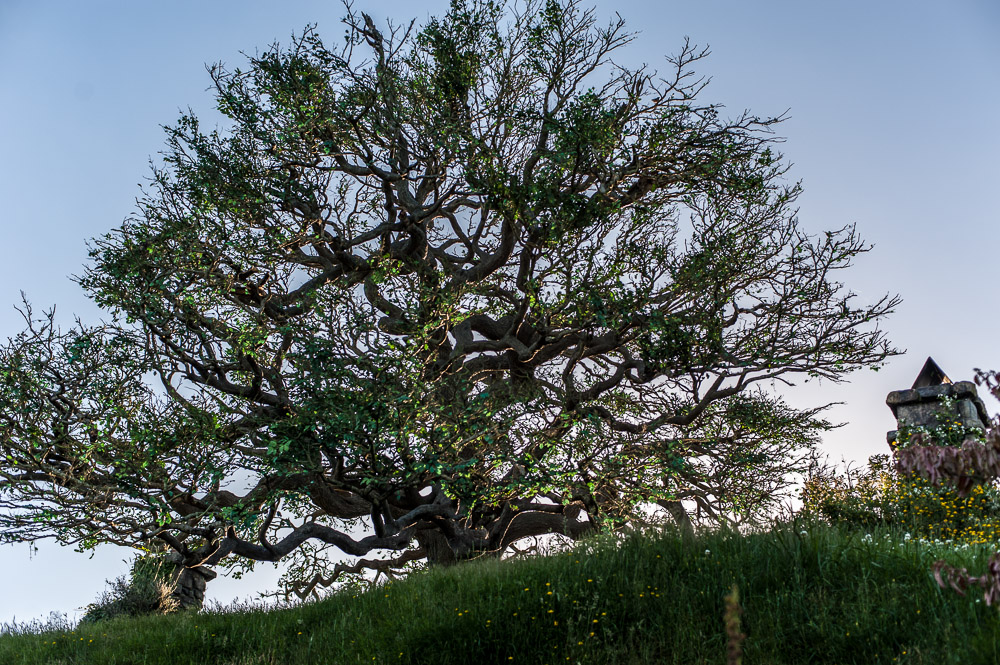
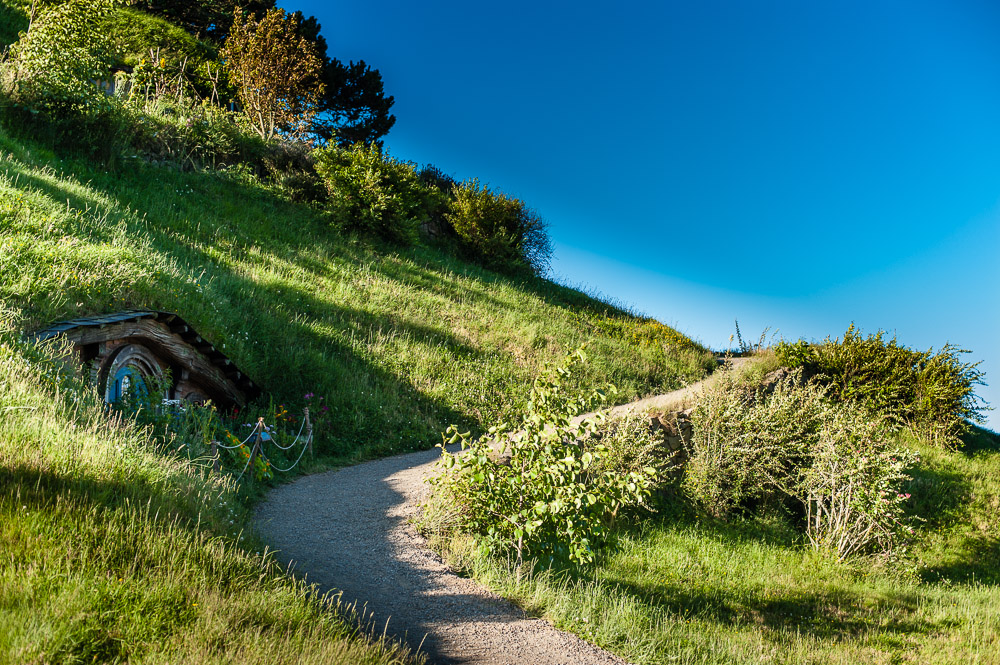




Hobbits’ burrows:



 Quick, let’s bury the body here…
Quick, let’s bury the body here…
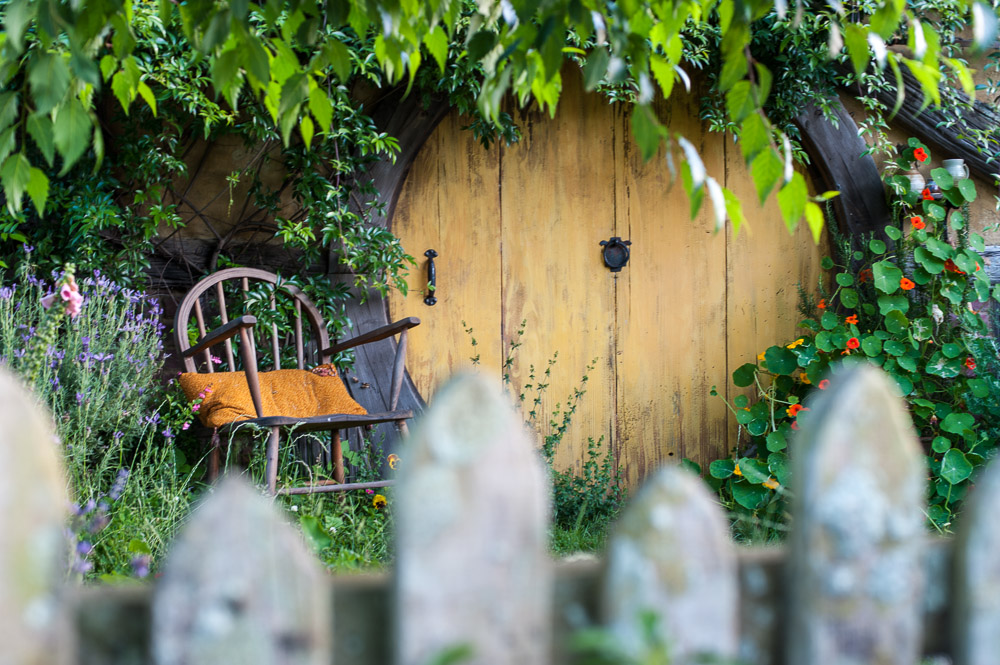

// Important!: Should you ever decide to visit both subterranea in one day, you’ll have to be very careful to get the timing right. The last tour of the hobbits’ village begins at 17.30. Thankfully we were able to persuade the management to make an exception for us and give us an after-hours excursion of the place (“but we’ve come a reeaal long way, you know!…”). And on that note, this first installment – on the first three days in NZ – is completed.
The rest of the photos from the first days of our adventure are here.
Next up – days 3-5…







































